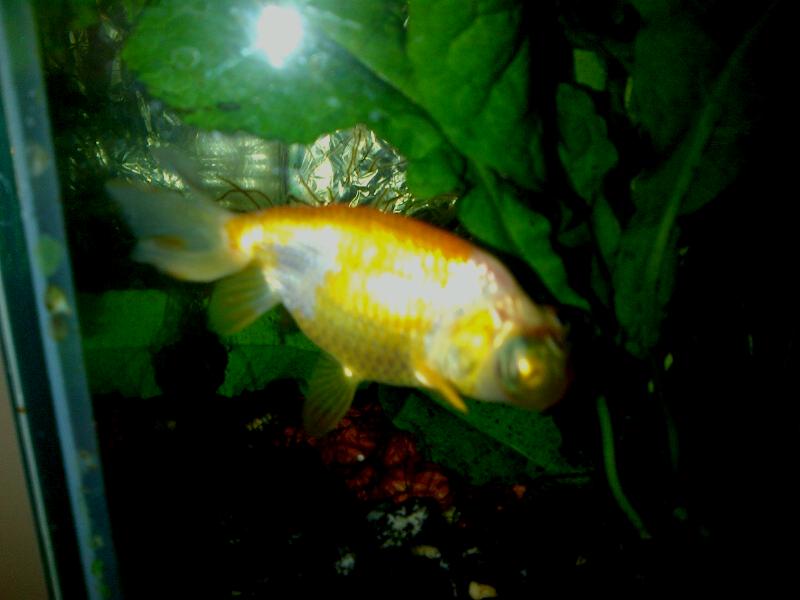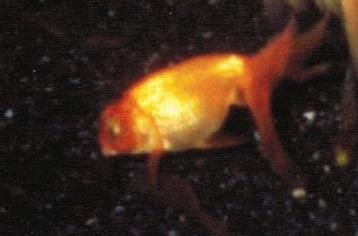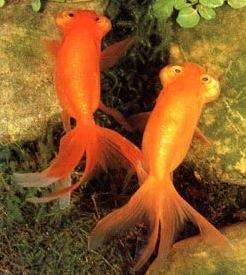Goldfish Culling - Celestials page 3 / 6
Culling for finnage presents no unique challenges. This is a twintail variety with a caudal that usually expresses itself as a deeply forked ribbontail. Ideally the caudal should be fully divided but if all else about the fish is exceedingly promising I’ve been known to hold on to one that is only 50% divided. Invariably this improves with age. I’ve had good luck with double anals. I look for a caudal that is held erect with the dorsal lobes rising above the line of the back. From the top view I like to see an inverted ‘V.’ Way back in 1908, Wolf described some Celestials as having ‘dolphin tails.’ These are still seen in any batch of fry and can best be likened to the carriage of the butterfly tail—held horizontally to the flanks of the body. In almost every case, this is due to too sharp a downturn at the caudal peduncle. Both faults can be detected very early on.
Even though my stock has been long-finned from day one, there is almost always a minority of fish with short caudals in every generation. Some of these caudals eventually grow much longer; some do not. Here’s one, from the generation previous to my current batch, that I held on to just out of curiosity for about a year before re-homing it:

Matsui explains that the traditional Celestial always had two distinct caudal lengths, long and short, and the preference for either was regional. Fish in the south of China were bred for long caudals. Fish in the north were bred for short caudals. It was the southern form that was first exported to Japan in 1903 and served as the foundation stock for Japanese Celestials until World War II. In turn, all the Celestials that arrived in America in the early 1900s were imported from Japan, which established the preference for long caudals here.
For the long-tailed fish, there is usually a caudal ‘growth spurt’ somewhere around one year of age so I avoid selecting fish with extravagant length of caudal at too early an age. This also guards against the likelihood of a fish being a runt. On average, at about 6 months, I prefer to see a caudal about half the length of the body, (as in the earlier photo of my yellow Celestial), which will most likely give me an adult with a caudal as long as the body. To my eye, this creates an especially balanced and elegant profile which is quite handsome in action. And for purists, that is also precisely the caudal length allowed for in the American standards. Here’s a snapshot (remember film?) of a young fish I bred two generations ago (2006), the paternal grandmother of my current generation. She’s about 11 months old and the caudal is just beginning to ‘take off:’

The broadness of the caudal lobes is that which I associate with ribbontails, only moderately wide. I usually select against fish with exceedingly narrow caudal lobes, which to my eye throws off the balance of the fish. A broader than average caudal lobe does present itself in most spawns—a trait I associate with Bubble Eyes—and it can add an elegant touch if the weight of the tail doesn’t cause it to droop or impair the fish’s ability to swim.
And here’s a photo of a lovely mature pair, circa 1970, with caudals nearing full bloom. This photo, one of several in a series, was used to grace the cover of the GFSA’s ‘Goldfish Guide’ published in the late 70s:

Previous Page Next Page






